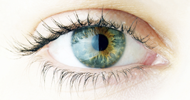 Retinitis Pigmentosa is a genetic disease that causes a slow deterioration of the vision which ultimately leads to blindness. This disease causes a progressive deterioration of the photosensitive cells of the retina. First symptoms of the disease normally occur around early adulthood but can afflict anyone at any age.
Retinitis Pigmentosa is a genetic disease that causes a slow deterioration of the vision which ultimately leads to blindness. This disease causes a progressive deterioration of the photosensitive cells of the retina. First symptoms of the disease normally occur around early adulthood but can afflict anyone at any age.
This disease is far more prevalent in southern countries but afflicts many Canadians as well. Currently thousands of Canadians suffer from this degenerative disease. Unfortunately the medical community in North America believes that there is little or nothing that can be done to treat Retinitis Pigmentosa.
Neverteheless, this treatment has proven its effectiveness throughout the world. Thousands of people from all over the world, Italians, Germans, Russians, Argentineans, Venezuelans, (35 countries at last count,) have benefited from these treatment methods that are currently being practiced almost exclusively in Cuba. These clinics in Cuba may in fact be the only hope for people suffering from this disease to arrest the progression of the disease and to avoid becoming blind.
Notes from Dr. Alberto Jesús Barrientos Castaño, specialist in retinitis pigmentosa
The objective of the treatment for Retinitis Pigmentosa which is done in Cuba is to stop or control the progression of the disease. It offers an effective alternative to improve the quality of life for those who suffer from this disease.
In Cuba, the treatment is based on the vascularisation of the eye. This treatment is not based on genetic engineering as the research in genetics does not yet offer effective solutions.
The treatment is actually done on the eye itself. According to Cuban physicians there is still much research that must be done before we will be able to correct the genetic mutation that causes Retinitis Pigmentosa.
There are more than 30 different genes which cause the disease and each has several possible mutations which makes the research much more complicated.
This is why the Cuban specialists focus on the vascularisation of the eye for more than 20 years. This approach is to encourage the development of the blood vessels which bring blood, oxygen and nutrients to the eye.
Research around the world began with cellular grafting in the eye. In Russia, surgeons grafted stem-cells but these cells were not able to regenerate as they lacked vascular supply. There was also the approach of cellular remodeling, but this also was not effective.
Finally, Cuba was able to offer an exclusive and effective threefold treatment for those who suffer from Retinitis Pigmentosa.
The complete treatment includes a three-part approach:
1- There is a micro-surgery which is unique in the world. This technique was developed by the Prof. Dr. Orfilio Peláez Molina. This was the most important discovery regarding this disease. This surgical procedure is called Surgical Revitalization (Chirurgie Revitalizadora :CRV).
This method of surgery is considered to be extremely delicate and ophthalmologists and retinologists of the entire world refer their patients to Cuba.
The surgery involves grafting a piece of living fatty tissue onto the back of the retina which stimulates blood vessel growth. By doing this, the cells that are still alive in the Retina are nourished and encouraged to grow. This is why it is essential that there remain still enough living cells in the eye to be able to benefit from the treatment.
2. The Cuban Centre for Research on Ozone has established a protocol to permit patients to benefit from “Ozonotherapy”. The results of this research has been corroborated by international studies. The ozone is not administered directly into the eye. The treatment is administered either by intravenous injection or by anal suppository. It promotes the development of blood circulation to the retina. The patient receives 14 treatments during the stay in Cuba.
3 The use of “Electro-stimulation” has been demonstrated to be very effective. The images perceived by the eye are transformed into electric impulses to be received by the brain. The treatment of electro-stimulation helps to reinforce this process.
Source : Dr. Alberto Jesús Barrientos Castaño, specialiste in Retinitis Pigmentosa
MOST REQUESTED SERVICES
Retinitis Pigmentosa
Retinitis Pigmentosa is a genetic disease that causes a slow deterioration of the vision which ultimately leads to blindness
> Read More
Orthopedics
Orthopedic surgery in Cuba: It is often difficult to find qualified orthopedic surgeons in Canada.
> Read More
Dental Care
Outine exams – Dental cleaning – Fillings – Root canal treatments -Bridges and crowns – Dentures – Dental implants: available at really reasonable prices
> Read More
Diagnostics
Seeing a physician for routine checkups is a good way to stay healthy and prevent small, treatable problems
> Read More
Cosmetic Surgery
Both men and women are taking advantage of affordable rates on esthetic or aesthetic surgery in Cuba.
> Read More
